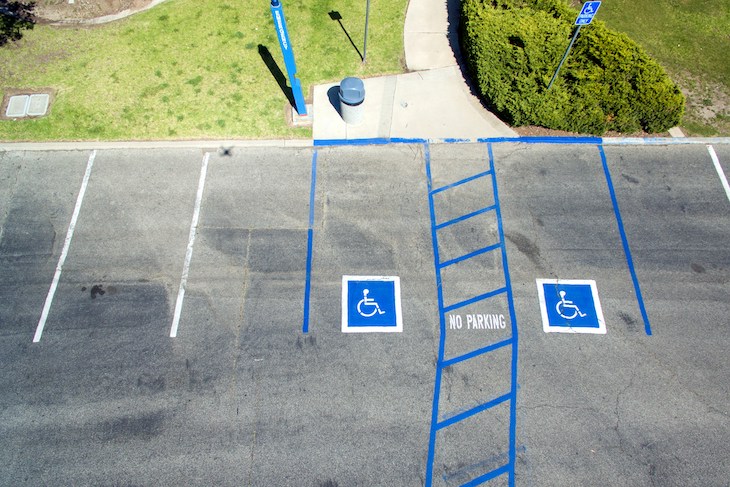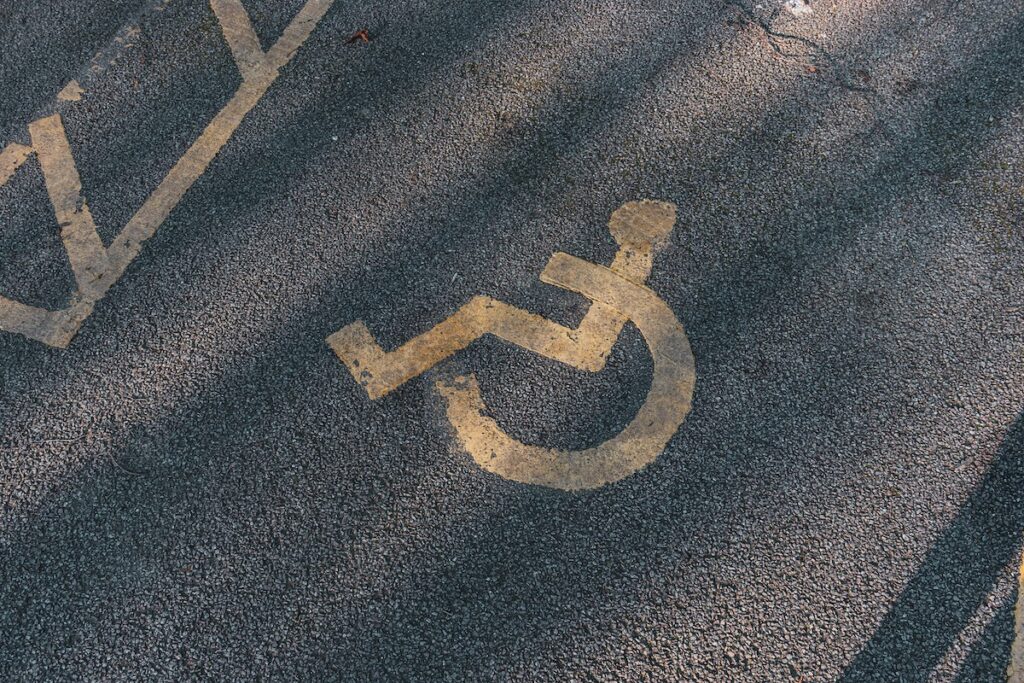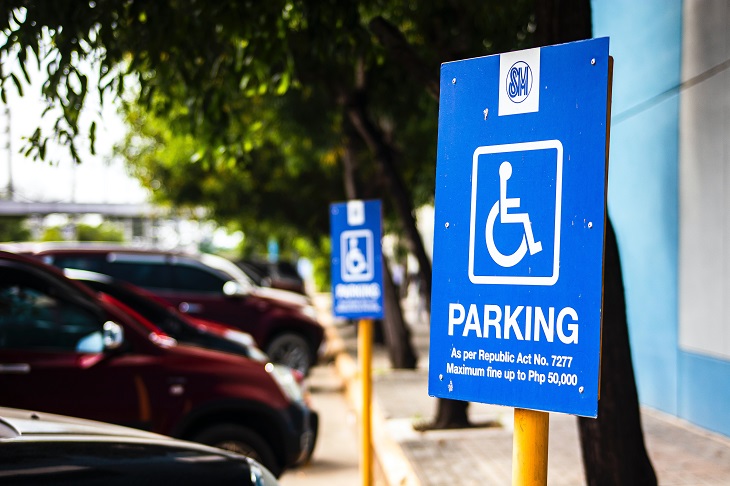Navigating the intricacies of handicap parking permits is crucial to ensuring accessibility for drivers in the United States. These permits play a pivotal role in providing individuals with disabilities the convenience of accessible parking spaces. Understanding the step-by-step process of obtaining and utilizing these permits is essential for drivers who require special accommodations. This comprehensive guide will illuminate the procedures, requirements, and benefits associated with handicap parking permits, empowering drivers to navigate the system with confidence and ease.
Exploring the step-by-step journey begins with understanding the eligibility criteria for obtaining a handicap parking permit. From the application process to the types of permits available, this guide will delve into the intricacies of each stage. Special attention will be given to the documentation required, ensuring drivers are equipped with the necessary information to facilitate a smooth application process. Additionally, the guide will shed light on the responsibilities that come with holding a handicap parking permit, promoting a sense of awareness and accountability among permit holders.
What you need to know about the handicap parking permit application
When applying for a handicap parking permit in the United States, there are essential details that individuals should be aware of to ensure a smooth and successful application process. Firstly, understanding the eligibility criteria is crucial. Individuals with significant mobility impairments or specific medical conditions affecting their ability to walk may qualify for a permit.
The application itself requires specific documentation to support the request. This often includes a medical certification from a licensed healthcare professional, verifying the applicant’s need for accessible parking. Ensuring that all required documents are prepared and submitted accurately is key to expediting the application.
Applicants should be aware of the different types of permits available, such as temporary or permanent placards and license plates, each serving specific needs. Temporary permits are usually issued for a specified duration, aligning with the medical condition’s expected timeframe.
Understanding the responsibilities that come with holding a handicap parking permit is equally important. Permit holders must ensure the permit is used only when the individual with the disability is present, and the vehicle is actively transporting them. Misuse of handicap parking permits can result in penalties, emphasizing the need for responsible and ethical use.
By being well-informed about the eligibility criteria, required documentation, permit types, and responsibilities, applicants can approach the handicap parking permit application process with confidence and contribute to fostering an inclusive and accessible environment for individuals with disabilities.
Disabled parking eligibility
Eligibility for disabled parking is a crucial aspect of ensuring that those who genuinely need accessible parking spaces have the opportunity to benefit from them. In the United States, eligibility criteria for disabled parking permits are typically based on the individual’s mobility limitations or specific medical conditions.
Individuals with significant mobility impairments that affect their ability to walk or those with medical conditions that require assistance or accommodation may qualify for a disabled parking permit. Common qualifying conditions include but are not limited to:
- Mobility impairments: Conditions that substantially limit a person’s ability to walk, such as paralysis, severe arthritis, or neurological disorders.
- Medical conditions: Individuals with medical conditions that necessitate the use of accessible parking, such as severe respiratory conditions, cardiac conditions, or those requiring the use of assistive devices.
When applying for a disabled parking permit, applicants must provide accurate and comprehensive medical documentation from a licensed healthcare professional. This documentation serves as evidence of the individual’s eligibility. It ensures that the permits are allocated to those who truly require them, promoting fairness and equitable access to accessible parking spaces.

ADA criteria for parking permits
The Americans with Disabilities Act (ADA) sets forth specific criteria for parking permits to ensure accessibility for individuals with disabilities. ADA criteria focus on creating an inclusive environment and addressing the unique needs of those with mobility challenges. To qualify for an ADA-compliant parking permit, an individual must have a disability that substantially limits their ability to walk or requires the use of assistive devices.
Key ADA criteria for parking permits include:
- Mobility Limitations: Individuals with significant impairments affecting their mobility, such as paralysis, severe arthritis, or neurological disorders, may qualify.
- Medical Conditions: Those with medical conditions that necessitate the use of accessible parking, such as severe respiratory or cardiac conditions, also meet ADA criteria.
- Healthcare Professional Certification: ADA compliance requires that applicants provide documentation from a licensed healthcare professional verifying the existence of a qualifying disability.
- Permit Types: The ADA accommodates different types of parking permits, including temporary placards, permanent placards, and special license plates, tailored to the specific needs and duration of the individual’s disability.
Adhering to these ADA criteria makes the issuance of parking permits a targeted and fair process, ensuring that accessible parking spaces are reserved for those who genuinely require them. This commitment to inclusivity aligns with the broader goals of the ADA, which are to eliminate barriers and promote equal opportunities for individuals with disabilities.
What is the issuance process for handicap permits?
The issuance process for handicap permits involves several key steps designed to ensure that these permits are granted to individuals who genuinely require accessible parking due to disabilities. The process typically includes the following components:
- Eligibility Assessment: Individuals seeking a handicap permit must first undergo an eligibility assessment. This assessment is often based on specific criteria, such as significant mobility impairments or qualifying medical conditions.
- Medical Certification: Applicants are required to provide medical documentation from a licensed healthcare professional certifying the existence of a qualifying disability. This documentation serves as evidence to support the application.
- Application Submission: Applicants complete and submit the necessary application forms and the required medical certification. The application may vary depending on the state or jurisdiction but generally includes personal information, details about the disability, and contact information.
- Review and Approval: The submitted applications are reviewed by relevant authorities, such as the Department of Motor Vehicles or a designated agency. Approval is granted based on the accuracy of the information provided and adherence to eligibility criteria.
- Issuance of Permits: Upon successful review and approval, handicap permits are issued to eligible individuals. Depending on the nature and duration of the disability, these permits may include temporary placards, permanent placards, or special license plates.
- Distribution of Information: Information about the issued permits, including details about the permitted individual and the vehicle, is recorded and may be accessible to relevant authorities to ensure proper enforcement and usage.
The issuance process is designed to be thorough and fair, aiming to reserve accessible parking spaces for those who genuinely need them. By adhering to this process, authorities contribute to creating an environment that prioritizes inclusivity and accessibility for individuals with disabilities.
Renewal of handicap parking permits
The renewal process for handicap parking permits is critical to ensure that these permits remain accessible to individuals who continue to experience mobility challenges due to disabilities. Renewal procedures are typically in place to verify the ongoing eligibility of permit holders and to update any necessary information. The renewal process involves several key steps:
- Timeframe: Handicap parking permits, whether temporary or permanent, have specific expiration dates. Permit holders must be aware of these dates and initiate the renewal process within the designated timeframe.
- Eligibility Confirmation: During renewal, authorities may require individuals to confirm their continued eligibility for a handicap parking permit. This may involve obtaining updated medical documentation to verify the persistence of the qualifying disability.
- Application Submission: Permit holders typically need to submit a renewal application along with any required documentation. The application may include personal information, details about the disability, and contact information.
- Review and Approval: Renewal applications undergo a review process to ensure accuracy and adherence to eligibility criteria. Approval is granted based on the confirmation of continued eligibility.
- Issuance of Renewed Permits: Once the renewal is approved, authorities issue renewed handicap permits to eligible individuals. These permits may include updated expiration dates and relevant information.
- Communication: Permit holders are informed about the successful renewal, and details about the renewed permits are updated in relevant records for proper enforcement and usage.
By instituting a renewal process, authorities contribute to maintaining the integrity of the handicap parking permit system, ensuring that accessible parking spaces are reserved for those who genuinely need them over time. This process aligns with the commitment to fostering an inclusive and accommodating environment for individuals with disabilities.
Temporary handicap parking permits
Temporary handicap parking permits serve as a crucial resource for individuals facing short-term mobility challenges due to injury, surgery, or medical conditions with a defined recovery period. These permits are designed to provide accessibility to those who require assistance for a limited duration, ensuring they can navigate public spaces with ease during their recovery.
The application process for temporary permits typically involves the following steps:
- Eligibility Determination: Individuals with temporary mobility impairments, such as those recovering from surgery or injuries, may be eligible for a temporary handicap parking permit. The eligibility is based on the anticipated duration of the impairment.
- Medical Certification: Applicants must provide medical documentation from a licensed healthcare professional, certifying the existence of a temporary disability and specifying the expected duration of the impairment.
- Application Submission: Individuals complete and submit the necessary application forms, including personal information, details about the temporary disability, and the healthcare professional’s certification.
- Issuance of Temporary Permits: Upon successful review and approval, temporary handicap parking permits are issued to eligible individuals. These permits often have a specific expiration date corresponding to the expected duration of the temporary disability.
Temporary permits play a vital role in ensuring that individuals facing short-term mobility challenges have the necessary support to maintain their daily activities and access essential services. This flexibility in permit issuance reflects a commitment to inclusivity and responsiveness to the diverse and evolving needs of individuals with disabilities.

Handicap parking permit documentation
Handicap parking permit documentation is a critical component of the application and renewal processes, serving as the evidence required to verify an individual’s eligibility for accessible parking. The documentation is typically in the form of a medical certification provided by a licensed healthcare professional and includes:
- Healthcare Professional’s Statement: The healthcare professional’s statement is a written confirmation that the individual has a qualifying disability that substantially limits their ability to walk or requires the use of assistive devices. This statement outlines the nature and extent of the disability.
- Anticipated Duration (for Temporary Permits): The documentation for temporary handicap parking permits specifies the expected duration of the individual’s temporary disability. This information is crucial for determining the appropriate duration of the permit.
- Contact Information: The healthcare professional’s contact information, including their name, title, license number, and contact details, is typically included in the documentation. This information allows authorities to verify the legitimacy of the certification.
- Signature and Date: The healthcare professional’s signature and certification date are essential to authenticate the document and ensure its validity.
The documentation must be comprehensive, accurate, and up-to-date. Authorities rely on this documentation to make informed decisions about issuing or renewing handicap parking permits, emphasizing the importance of clear and reliable information from licensed healthcare professionals.
State-specific handicap permit regulations
State-specific handicap permit regulations play a pivotal role in determining the eligibility criteria, application processes, and overall management of handicap parking permits within each state. While the Americans with Disabilities Act (ADA) provides overarching guidelines, individual states can establish and enforce regulations tailored to their unique requirements. Key components of state-specific rules include:
- Eligibility Criteria: States define the specific criteria individuals must meet to qualify for a handicap parking permit. This often includes details about qualifying disabilities and the level of mobility impairment required.
- Application Processes: Each state outlines its procedures for applying for handicap parking permits. This includes the required documentation, application forms, and any associated fees. States may also offer online or in-person application options.
- Duration and Renewal: State regulations specify the duration of handicap permits, whether temporary or permanent and the procedures for renewal. Temporary permits are often linked to the anticipated duration of the disability.
- Types of Permits: States may offer different permits, such as temporary placards, permanent placards, and special license plates, each serving distinct purposes.
- Enforcement and Penalties: Regulations address the enforcement of handicap parking rules, including penalties for misuse or fraudulent use of permits. States may impose fines or penalties on individuals violating these regulations.
- Accessible Parking Space Designation: States determine the design and signage of accessible parking spaces to ensure compliance with ADA standards.
Understanding and adhering to state-specific regulations is essential for both individuals seeking handicap parking permits and authorities responsible for their issuance. These regulations contribute to the effective management of accessible parking spaces, promoting inclusivity and equitable access for individuals with disabilities.
Rights and responsibilities with handicap permits
Rights and responsibilities associated with handicap parking permits are essential aspects that individuals and authorities must be aware of to ensure the fair and lawful use of accessible parking spaces.
Rights of Permit Holders: Individuals with valid handicap parking permits have the right to:
- Accessible Parking: Permit holders are entitled to use designated accessible parking spaces to facilitate easier access to public places.
- Convenience: The permit allows individuals with disabilities to park closer to entrances, making it more manageable to navigate public spaces.
- Equal Access: Handicap permits grant individuals equal access to public facilities, promoting inclusivity and nondiscrimination.
Responsibilities of Permit Holders: Alongside these rights, permit holders have specific responsibilities:
- Proper Display: Individuals must correctly display the permit, either by hanging it on the rearview mirror or placing it on the dashboard, to ensure visibility for enforcement officials.
- Legitimate Use: Permit holders are responsible for using the permit only for the individual with the qualifying disability, preventing misuse by others.
- Compliance with Regulations: Holders must adhere to state-specific regulations, including renewal procedures, proper usage, and understanding the limitations of the permit.
Enforcement and Penalties: Authorities are responsible for enforcing handicap parking regulations, and penalties may be imposed for misuse, including fines or revocation of the permit. These rights and responsibilities collectively contribute to maintaining the integrity of the handicap parking system, ensuring that accessible spaces are available for those who genuinely need them.
This step-by-step guide to navigating handicap parking rules serves as a valuable resource for U.S. drivers seeking accessible parking solutions. By demystifying the application process, eligibility criteria, and responsibilities associated with handicap parking permits, drivers can approach the system with clarity and confidence. The importance of these permits cannot be overstated, as they contribute to creating an inclusive and accessible environment for individuals with disabilities.
As we navigate the complexities of the permit system, it becomes evident that accessibility is not just a legal requirement but a fundamental aspect of fostering a society that values diversity and equal opportunities. By adhering to the guidelines and regulations outlined in this guide, drivers play a role in creating a more inclusive community where everyone, regardless of their mobility challenges, can access parking spaces with dignity and ease. Ultimately, this guide empowers drivers to navigate the process seamlessly, promoting awareness and understanding of the significance of handicap parking permits in enhancing accessibility for all.
Featured Image by Jakub Pabis on Unsplash




